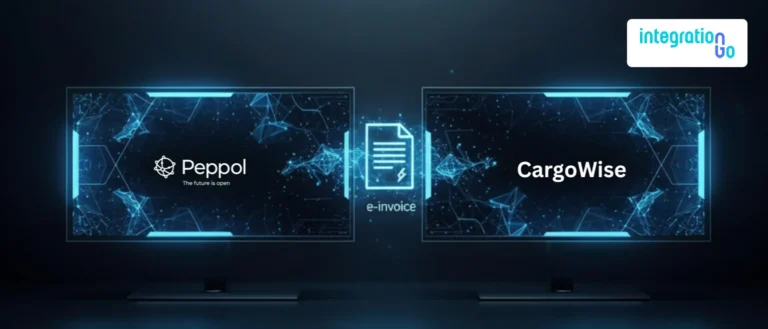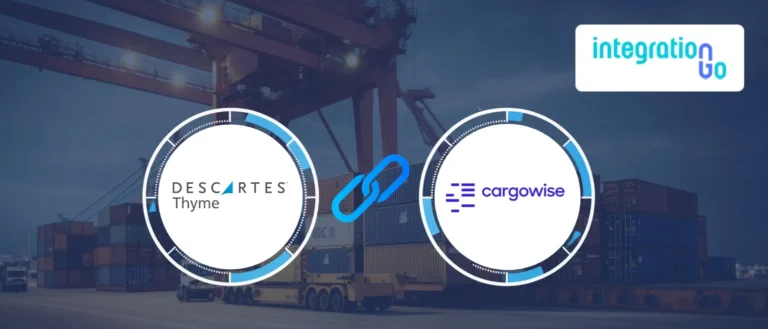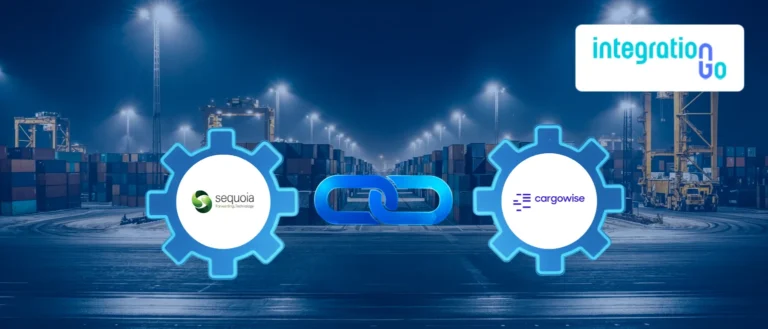“Information in logistics moves faster than freight—and if your systems don't communicate, you're already falling behind.”
As we see it, firms must watch shipments in real time, update customers promptly, and address interruptions without missing anything. If your systems aren't smoothly integrated, it's like trying to run a marathon with your shoes tied together and you'll stumble. API integration can help with that.
But what exactly can API integration do for your supply chain, and why should logistics professionals, freight forwarders, and third-party logistics providers care? Let's look at why it's becoming essential for organizations looking to remain competitive in this day and age.
What is API Integration in Supply Chains?
API integration enables multiple software systems to communicate in real-time. Consider every tool you use in your supply chain, including order processing platforms, warehouse management systems, shipping companies, inventory management systems, and even customer portals. Without API integration, each of these systems functions in isolation, forcing you to manually move data between them, an error-prone and time-consuming task.
These obstacles are removed with API integration. It connects your systems, allowing them to communicate information automatically and instantaneously. For instance, without requiring any manual input, tracking data can be sent straight from the carrier's system to your order management platform and then to the customer's site as a shipment leaves the warehouse. The outcome? a logistics operation that is quicker, more dependable, and more efficient.
Why Is API Integration Essential for Modern Supply Chains?
Faster Transactions Without Manual Hassles
One of the biggest benefits of API integration is speed. When systems are integrated, data flows automatically and instantly between platforms. This eliminates the need for manual entry, reduces human errors, and speeds up transactions. For instance, instead of manually updating inventory levels after every sale or shipment, an API can handle the updates in real-time, ensuring that stock levels are always accurate.
Reduced Manual Input and Labor Costs
Manual data entry is not only time-consuming, but also error-prone, which can result in delivery difficulties, invoicing issues, or even missed sales. When properly implemented, API integrations eliminate the need for human intervention in the majority of ordinary transactions. For instance, an API can automatically place a replenishment order with your supplier if your inventory management system notices that supplies are running low without any help from you.
Real-Time Visibility Across Your Entire Supply Chain
API integration enables complete visibility throughout your supply chain by integrating all of your systems and data points in real time. This means you'll always know where your shipments are, how much inventory is on hand, and whether any problems need to be addressed. Businesses can make better decisions, react to disruptions faster, and give consumers accurate updates when they have access to real-time information. These actions are essential for fostering customer loyalty and confidence.
Enhanced Agility and Flexibility
Supply networks must be adaptable, especially in today's volatile economy. API connectivity enables firms to respond quickly to unexpected developments, such as client demand fluctuations, supplier delays, or new regulatory requirements. Businesses may respond to these changes very immediately due to APIs, which minimize disruptions and preserve smooth operations by enabling real-time data sharing.
How to Set Up API Integration for Your Supply Chain
Identify the Data You Need to Connect
Begin by determining the important data elements that must be transferred between systems. Purchase orders, invoices, inventory levels, delivery statuses, and customer data are a few examples of this. The real benefits from your API integration can be ensured by understanding what data you need to connect.
Ensure Compliance and Security Standards
Regulatory compliance is a big issue in logistics, particularly when dealing with cross-border shipments and data protection regulations. Make that your integration conforms with industry requirements, such as GDPR for data protection or customs laws for international shipments, before putting an API into place. Security should also be a primary emphasis, with encryption and safe data transmission protocols implemented.
Develop Two-Way Communication Between Systems
API integration should enable both "push" and "pull" communication across systems. This implies that your APIs should not only send data from one system to another but also retrieve data as needed. For example, your order management system should be able to automatically change shipment statuses while simultaneously getting inventory updates from your warehouse system.
Implement Data Translation Features
Different systems often store data in different formats. Your API should be able to translate data between these formats to ensure consistency and accuracy across platforms. This step helps eliminate confusion and ensures that information flows smoothly throughout your supply chain.
Test and Validate the Integration
Before launching your API integration, make sure it is thoroughly tested. This ensures that data flows properly, systems interact effectively, and faults are fixed before they interrupt operations. All possible outcomes, such as data mistakes, system malfunctions, and performance under heavy loads, should be tested.
Launch and Monitor for Performance
Once the integration is live, ongoing monitoring is required to verify that everything operates smoothly. This includes tracking data flows, monitoring system performance, and recognizing problems before they worsen. Regular upgrades and optimizations will help your integration work smoothly as your business develops and changes.
How Long Does API Integration Take?
The time required to implement API integration varies according to the complexity of your systems and the breadth of the integration. Simple integrations may take a few hours, whereas more sophisticated configurations involving numerous systems may take several weeks. Working with professionals like IntegrationGo, however, can greatly accelerate the procedure. With our experience with logistics integrations, we can get your systems connected and working smoothly with minimal disturbance to your day-to-day operations.
How Much Does API Integration Cost?
The complexity of your systems, the number of integrations necessary, and any specific features needed all affect how much API integration will cost. While there may be an initial cost to implementation, the long-term benefits, such as lower labor expenses, more productivity, and fewer errors, often result in significant savings. At IntegrationGo, we provide adjustable pricing structures that are intended to accommodate companies of all sizes and provide the most possible return on investment.
Why IntegrationGo Is the Perfect Partner for Your API Integration Needs
API integration isn’t something you want to leave to chance. It demands technical competence, a thorough understanding of logistics operations, and the ability to manage the supply chain industry's specific obstacles. IntegrationGo can help with that.
We offer completely managed integration solutions that are suited to your individual requirements. We handle everything from the initial setup to continuous monitoring and support for your API integration, allowing you to focus on running your business. Our staff is well-versed in the logistics environment, so they can make sure your systems are linked together and operating at their best.
Conclusion
If you're ready to take your supply chain operations to the next level, IntegrationGo can assist. Our API integration solutions aim to simplify your logistical processes, lower costs, and provide real-time visibility into all aspects of your organization.
Contact IntegrationGo today to find out how our CargoWise API integration solutions may help you remain ahead of the competition and keep your supply chain functioning efficiently. This is where your supply chain for the future begins.



